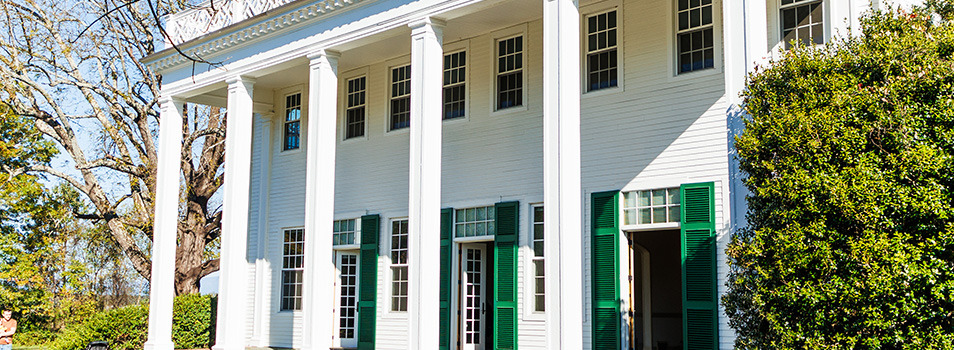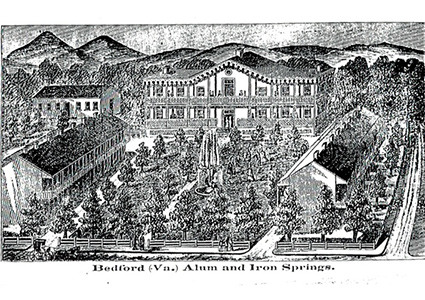Bedford Alum Springs Hotel

Holding Clues About Our Nation’s Heritage
The story of the Bedford Alum Springs Hotel property intertwines with the Revolutionary Era. John Hook, a Scottish merchant, laid the foundation for a sizable colonial store on these very grounds. His establishment served as a vital hub for the local community, providing essential supplies to settlers and travelers alike. Notably, Thomas Jefferson himself was a customer of Hook’s store, procuring goods for his Poplar Forest Plantation.
During the Revolutionary War, the hotel’s grounds played an even more critical role. The property’s owner leased the site to the Continental Army to house one a key arsenal which supplied Nathaniel Greene’s southern campaign and later housed British weapons seized at Yorktown. The arsenal operations relocated to Harper’s Ferry by 1812.
How You Can Help
Support the preservation of the Liberty-owned New London Projects by donating today.
Bedford Alum and Iodine Springs Resort

(Above) Engraving of the resort as it appeared in 1878
In the 1850s, Peregrine Echols began bottling and selling water from the local alum spring for medicinal use and in 1859 opened the Bedford Alum and Iodine Springs Resort. In the 1870s, Echols’ sons transformed the property into a grand resort and made use of the old arsenal building as a dance hall.
At the height of the 19th-century mineral springs craze, resort guests enjoyed the beautifully landscaped grounds and strolled down a brick path lined with osage orange trees to the “take the waters” at the spring. Testimonials from the period affirm its healing power.
The current structure, dating from the 1910s, is the third resort hotel on the site, the two previous having been destroyed by fire. It served as a hotel before transitioning to a private residence in the 1930s.
Additional Resources
- Bedford Alum Springs Hotel Report
- Student Research: Arsenal at New London (PDF)
- Student Research: Historic Landscape at Bedford Alum Springs Hotel (PDF)
A Work in Progress
Since Liberty acquired the property in 2018, the Bedford Alum Springs Hotel property has become a center for archaeological, architectural, and landscape investigation.
An archaeological survey of the property identified multiple 18th-century sites for future excavation as well as thousands of artifacts from every period of the property’s use, including:
- slag from iron smelting
- ceramics from the colonial period through the early 20th century
- hand-wrought nails from the colonial stores and taverns
- bottles used to market the Alum Springs water
- beads, buttons, and other domestic items
Osage orange trees still stand along the remnants of the brick path leading to the spring, and a colonial-era basement sits feet beneath the ground on John Hook’s lot. Proposals for future projects include excavation of the Hook store lot as well as the site where archaeologists have uncovered steps leading to the basement of what was most likely the last standing arsenal building.
Student Involvement
Students have been involved in every aspect of this ongoing project from landscape study to archival research to on-site archaeology. Students will continue to participate in future archaeological study and as well as research and interpretation of the grand resort hotel era.